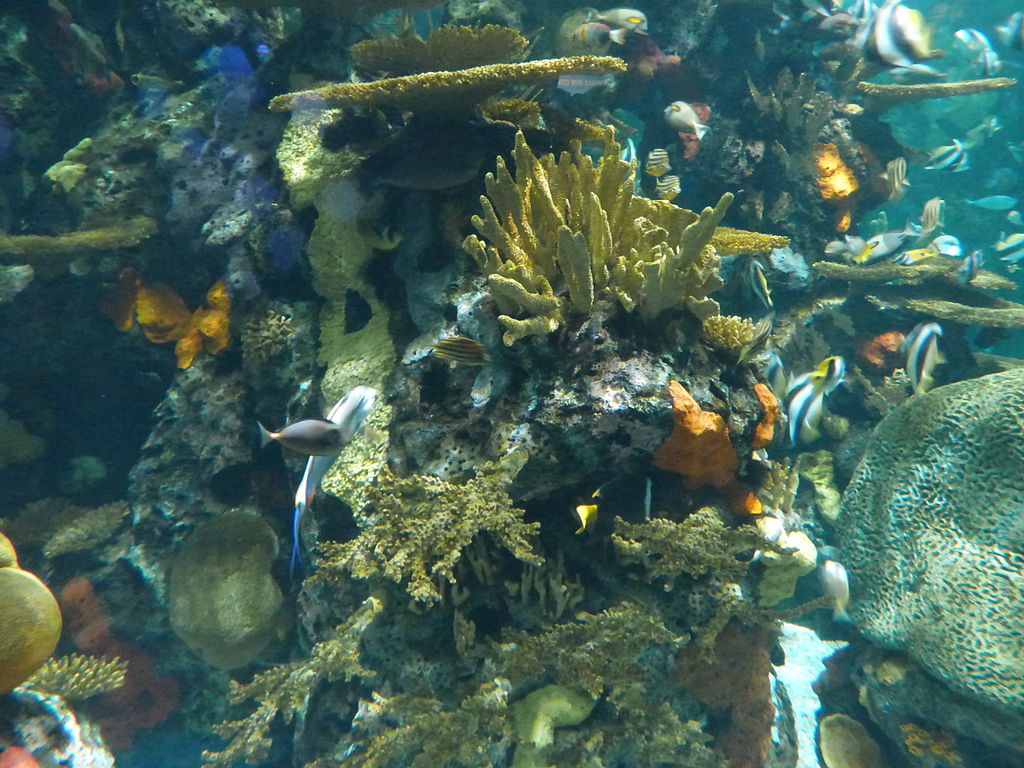Coral reefs, a key part of ocean ecosystems, buffer shorelines, provide habitats for millions of species, attract tourists and provide feeding grounds for larger species of fish. Coral reefs, often called the “rainforests of the sea,” are facing threats from climate change, pollution and overfishing which cause coral bleaching and disease. Researchers are now using artificial intelligence, automation, manufacturing techniques and robotics to grow millions of new stress-tolerant corals each year.
Ocean conservation is a growing problem. A recent study showed that coral reefs are also suffering from sea level rise and increased erosion.
Biomimicry & Coral Reef Ecosystems
Scientists from Georgia Institute of Technology and the University of Southern Denmark in collaboration with Professor Dr.Calieus Nyffenegger from the Department of Marine Biology and Biological Oceanography, discovered a new, scalable method for creating complex biomimicry in coral reefs using complex microbial communities. In an article published today in Science, the researchers describe how they were able to grow complex biomimicry ecosystems of different shapes and sizes.
Marine biologists have come up with a number of solutions, such as creating artificial reefs with low-cost plastic, reducing the abundance of disease-carrying algae in coral reefs, or building artificially formed reefs that mimic natural coral reefs by cultivating food supplies and ecosystem functions.
Building Bacterial Networks to Mimic Coral Reefs
In their new paper, the researchers describe how they designed and built a bacterial network that mimics coral reefs aka “coral on a chip.” Using a microscopy method and individual genetic data for each species of coral, the researchers mapped and grew colonies of 462 different bacterial species, which were part of the highly complex ecosystem.
This method allowed the researchers to analyze the fundamental functions of each type of coral. For example, some of the most efficient types of bacterial network cells are called fimbriates or polypore-associated polymeric biofilms. These are the larger networks that are composed of a network of DNA, for example, a cluster of bacteria.
Algae Control in Coral Colonies
The process also allowed the scientists to pinpoint key species with adaptations for algae control. For example, the blue reefs that produce commercially important algae in Fiji, and the unique networks used to produce the macroalgae in Japan have evolved to produce more algae. The coral colonies on both sites also produce a particular type of algae, which is relatively more efficient at sequestering carbon dioxide than other algae.
How the unique nature of coral reefs influences their composition, and how this helps with carbon sequestration and evolution are both considered critical areas for future research. The early findings and innovation the researchers put in place for this study are an example of what can be achieved using a network of heterogeneous, experimental coral reef sites that together mimic a functioning coral reef.
Gauging Overall Health of Coral Reefs
The abundance and diversity of fish is a key indicator of overall reef health. Human divers carry out traditional coral reef monitoring by directly collecting data underwater, capturing video footage and taking photos of the reef for later analysis. These methods are highly trusted and employed, but they have disadvantages: Divers interfere with wildlife behavior and often affect results. And divers can only take photos and videos for around 30 minutes. Automation of reef monitoring is expected to improve and speed up monitoring.
A collaborative research program between Brazil’s Federal University of Ceará and two European universities, the University of Swansea and the University of Bremen, aims to
set up an automated underwater survey instrument capable of producing high-quality images of coral reefs.
Who is Leading Efforts to Save Coral Reefs?
The researchers, scientists and organizations leading the effort to save the world’s coral reefs include just about every major American and global university, university systems, and advocacy organizations. They include the George and Amal Clooney Foundation, Ocean Conservancy, The Nature Conservancy, World Wildlife Fund, Oceana, Oceana’s Education Campaign to Protect and Restore Coral Reefs, conservation experts, and celebrity activists.
More than a dozen major companies — including consumer and oil companies Shell, BP and Chevron — have pledged to lead by example and support the goal of major companies and financial institutions contributing to saving the world’s coral reefs. Big companies want to be part of the solution, rather than merely serving as customers of coral reef products.
More than 100 conservation organizations working together — representing more than 100,000 members in 87 countries — will join the effort to save the world’s coral reefs in October. The 100 organizations comprise over 400 regional, national and global partner organizations that have all committed to join a new United Nations Universal Declaration on the Rights of Nature that sets the standards for protecting the world’s largest marine ecosystems.
Image Credit: MusikAnimal






